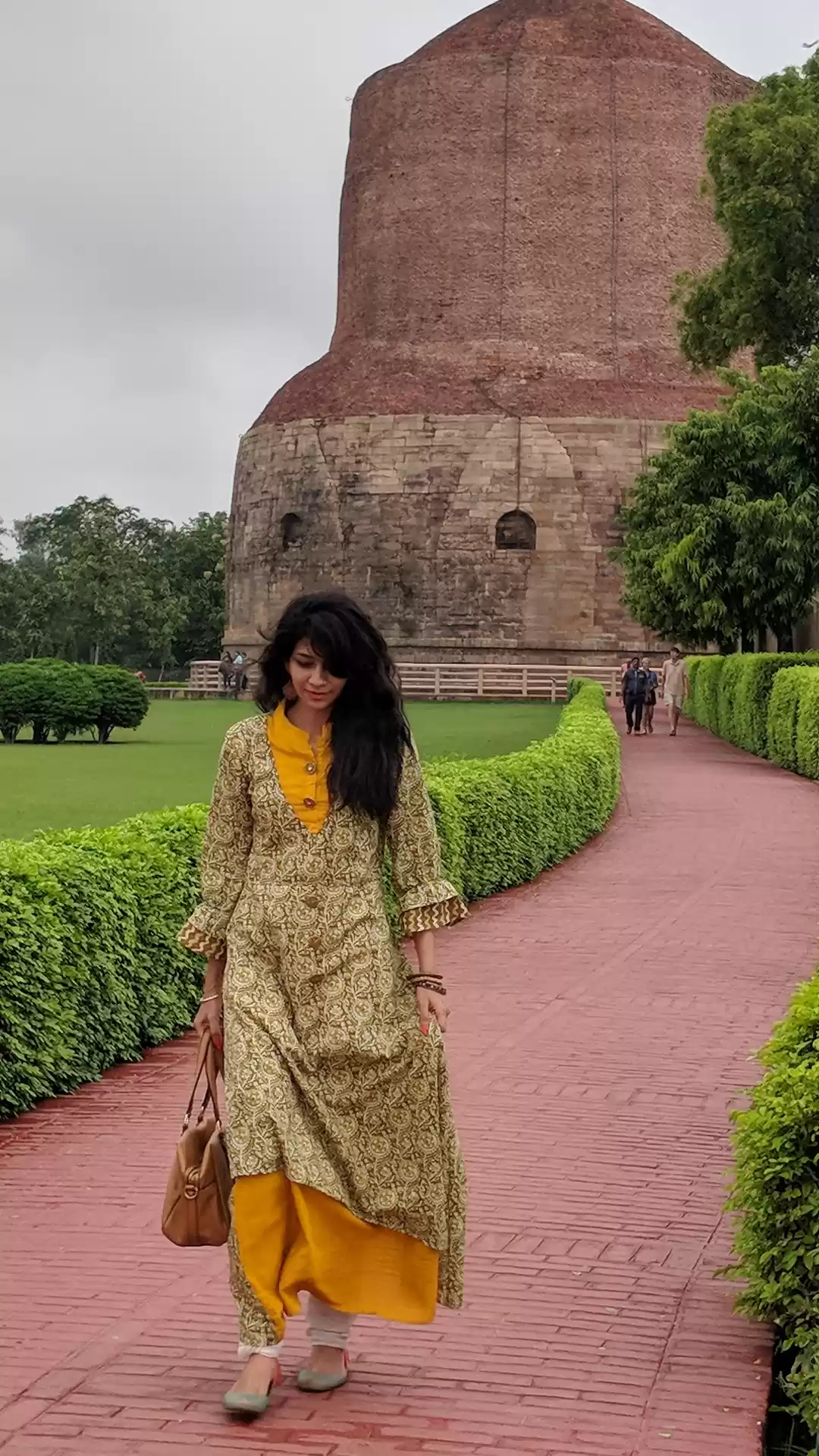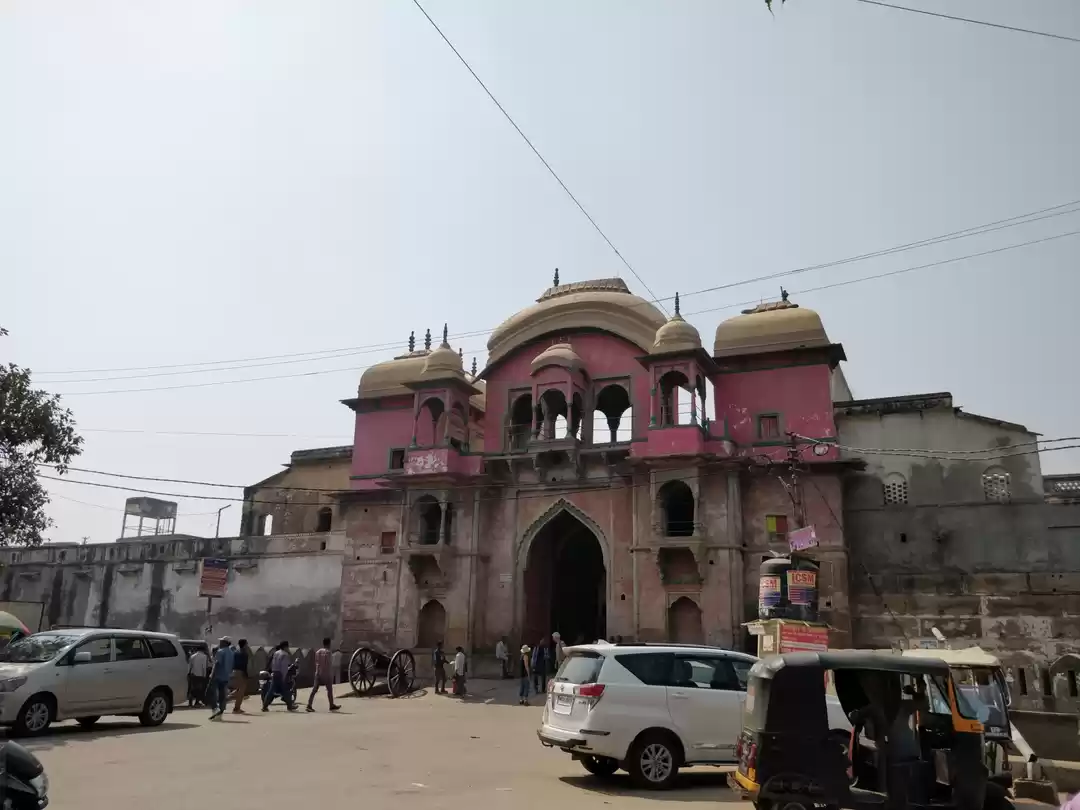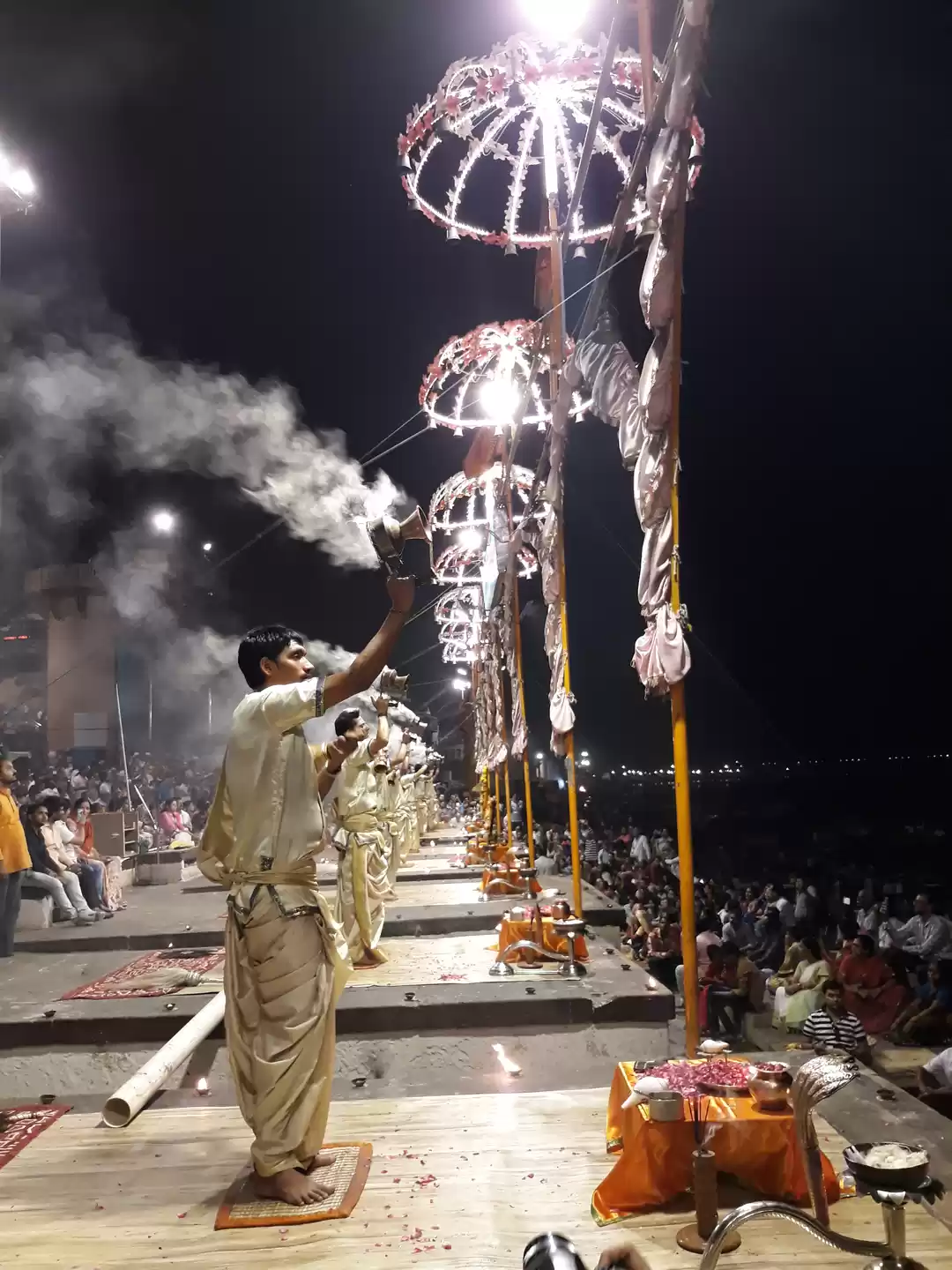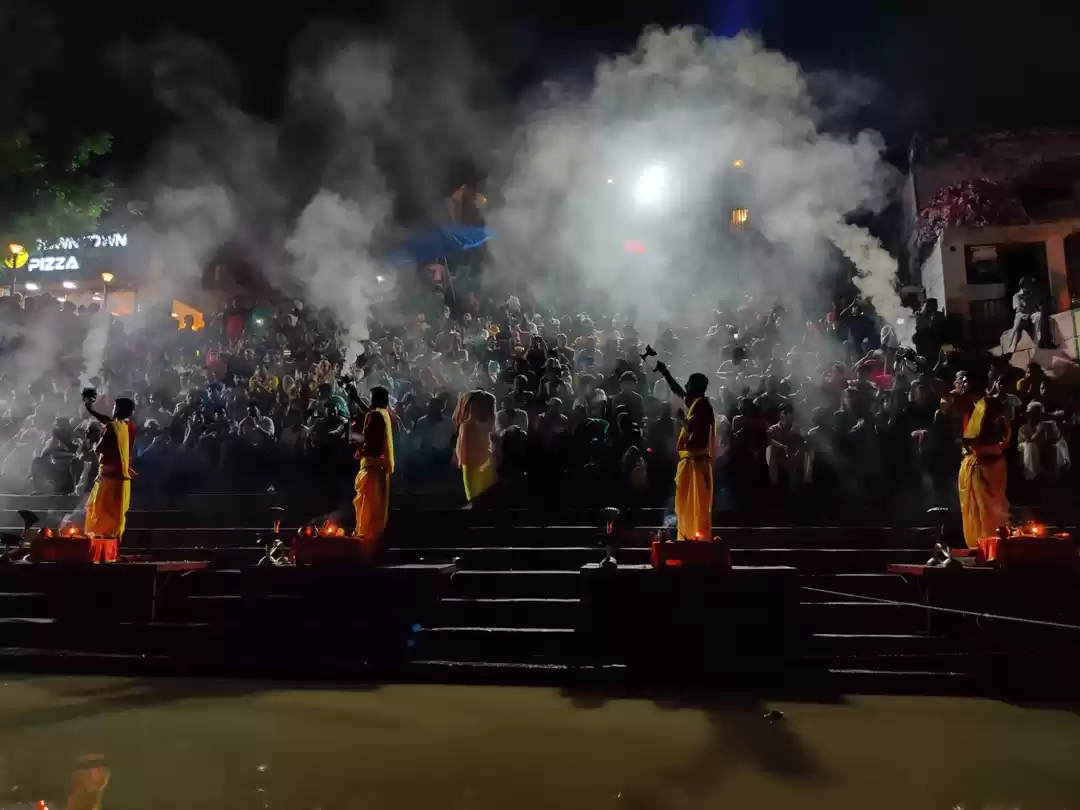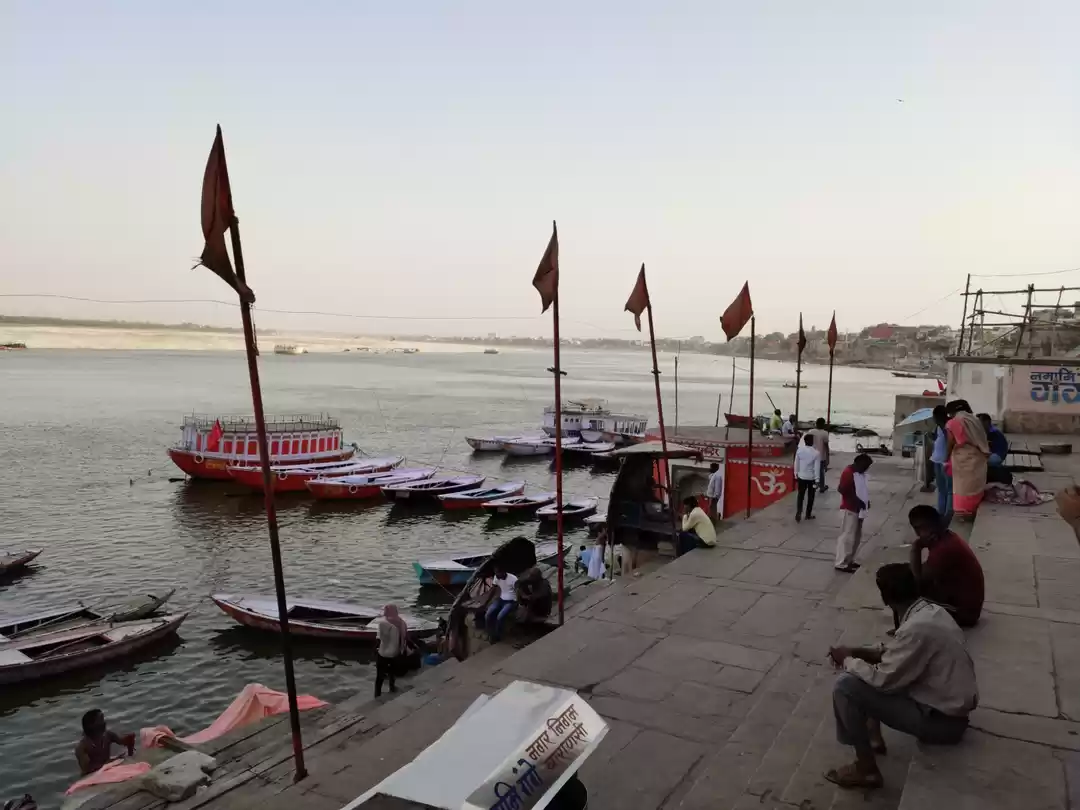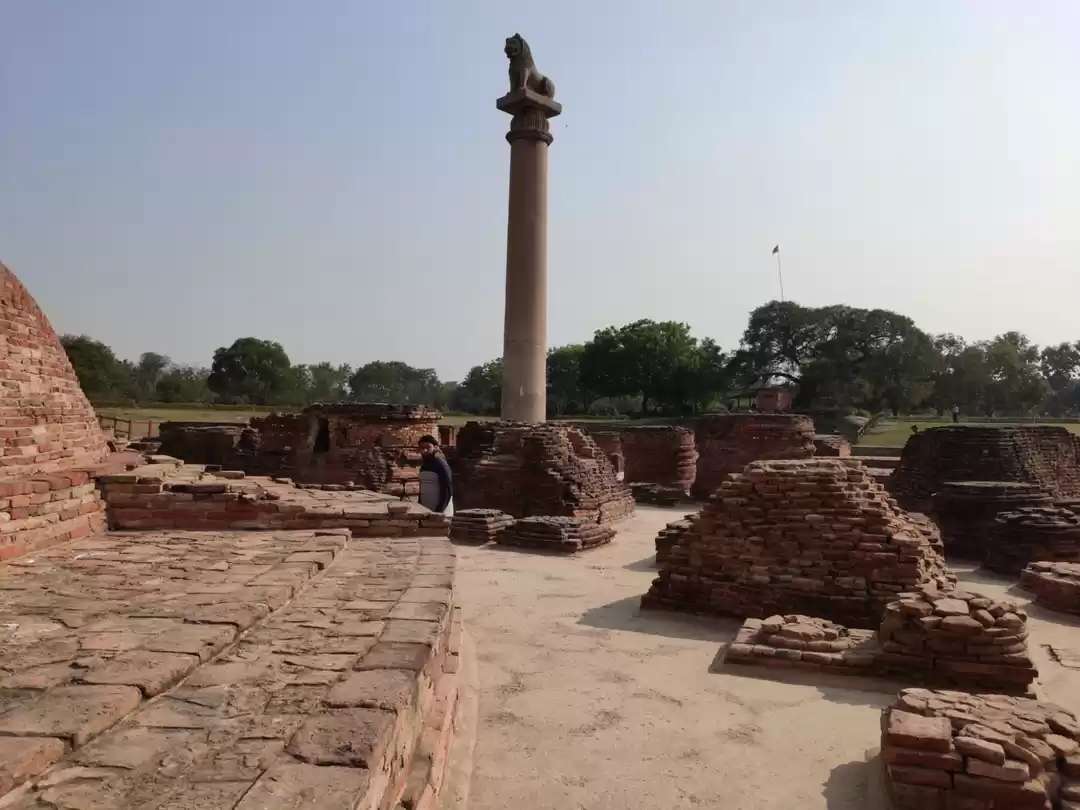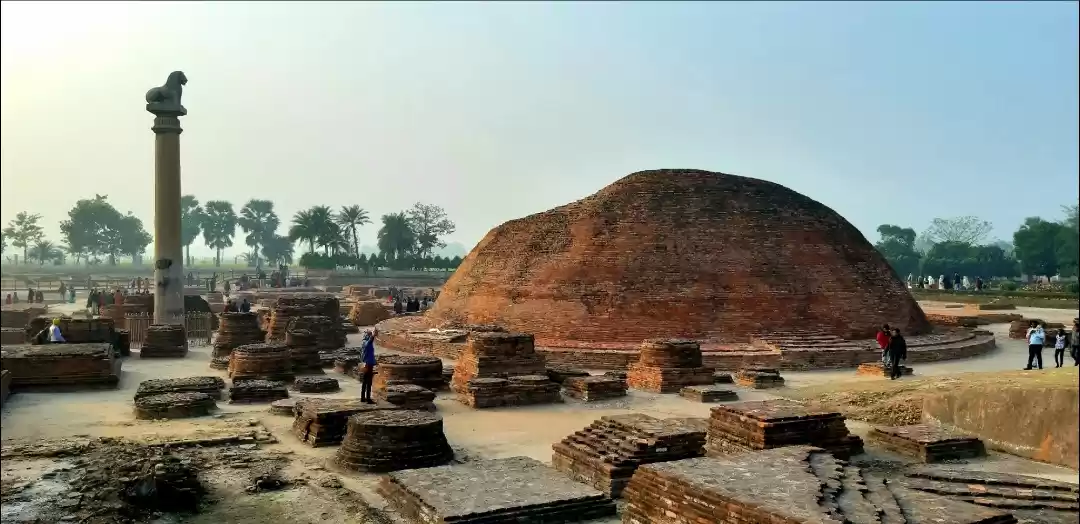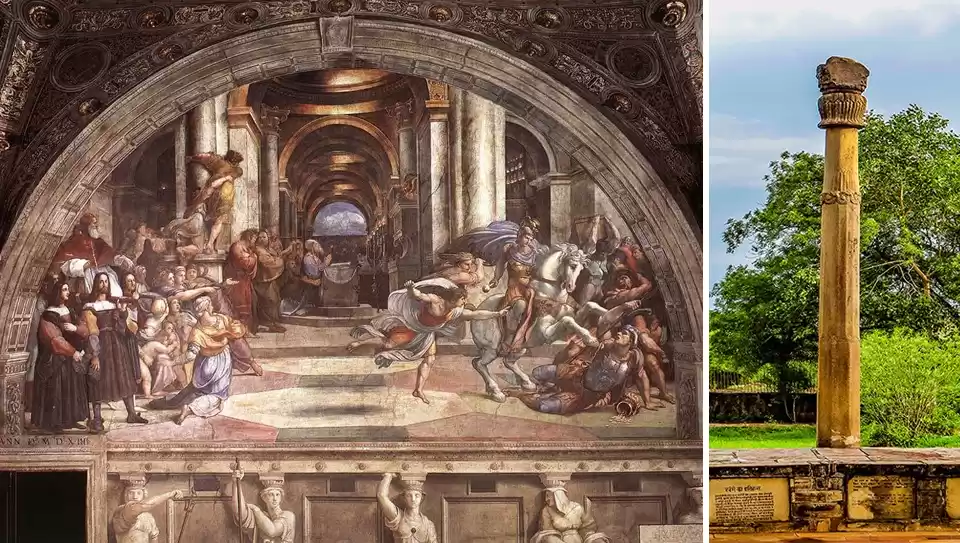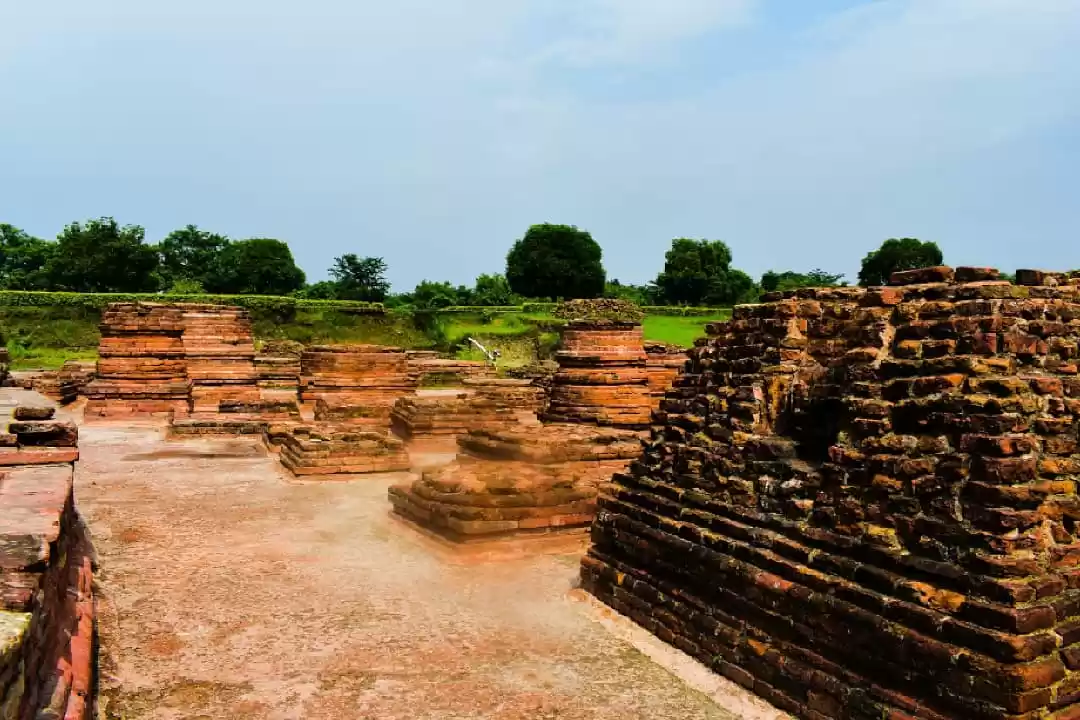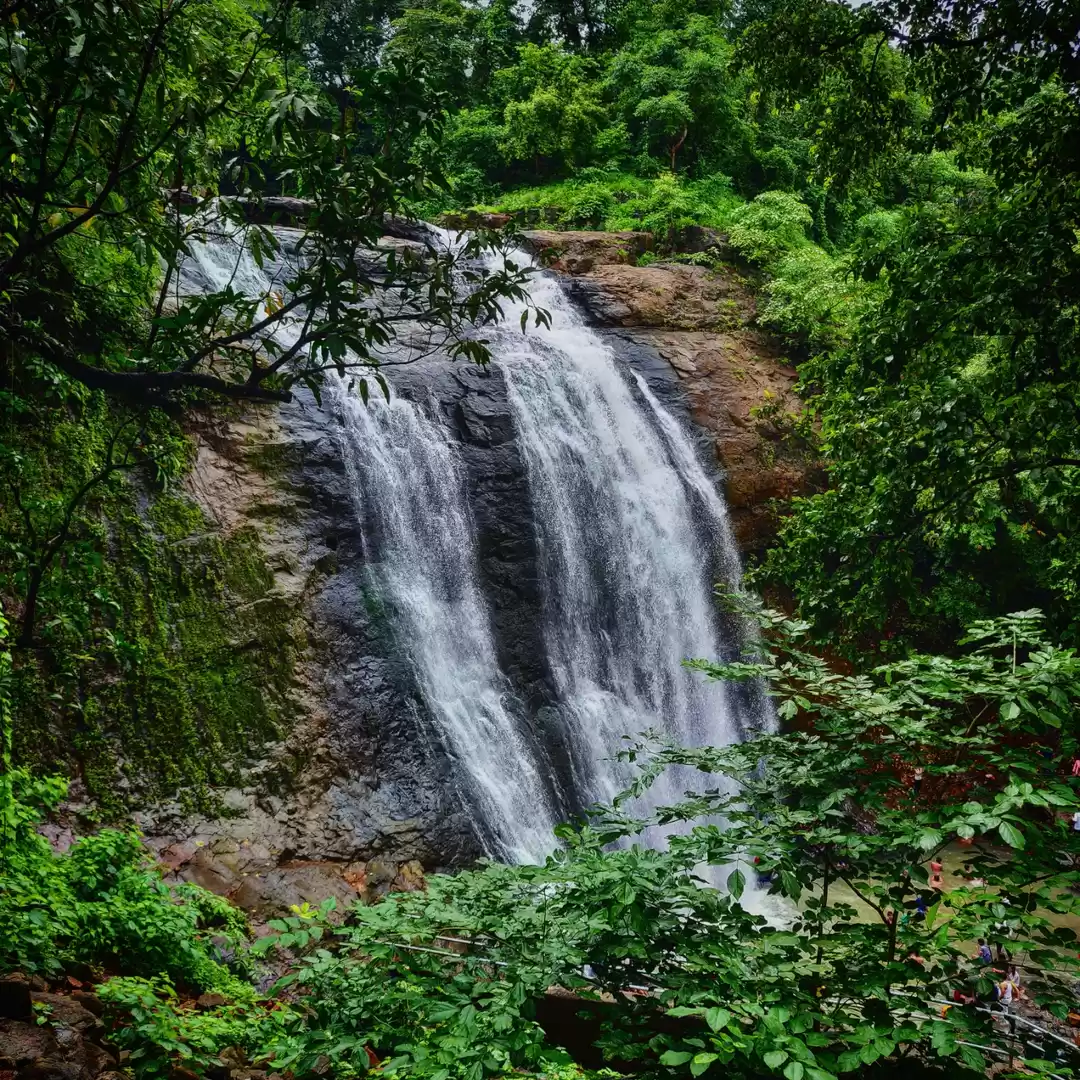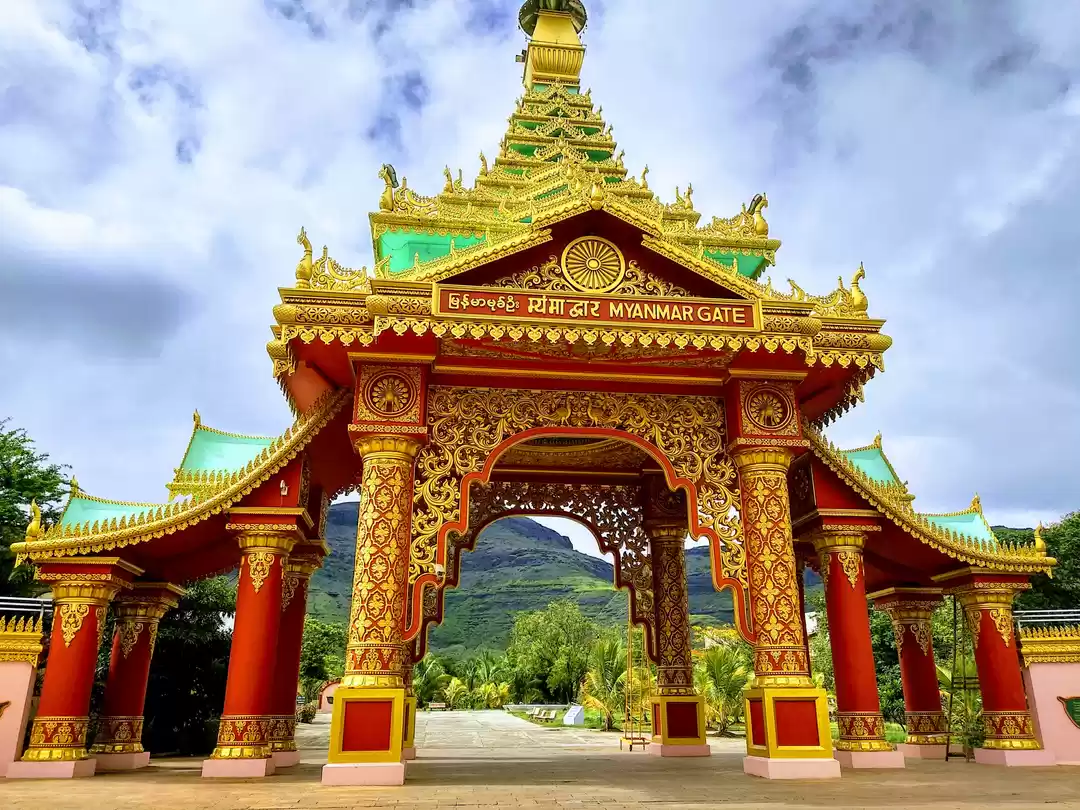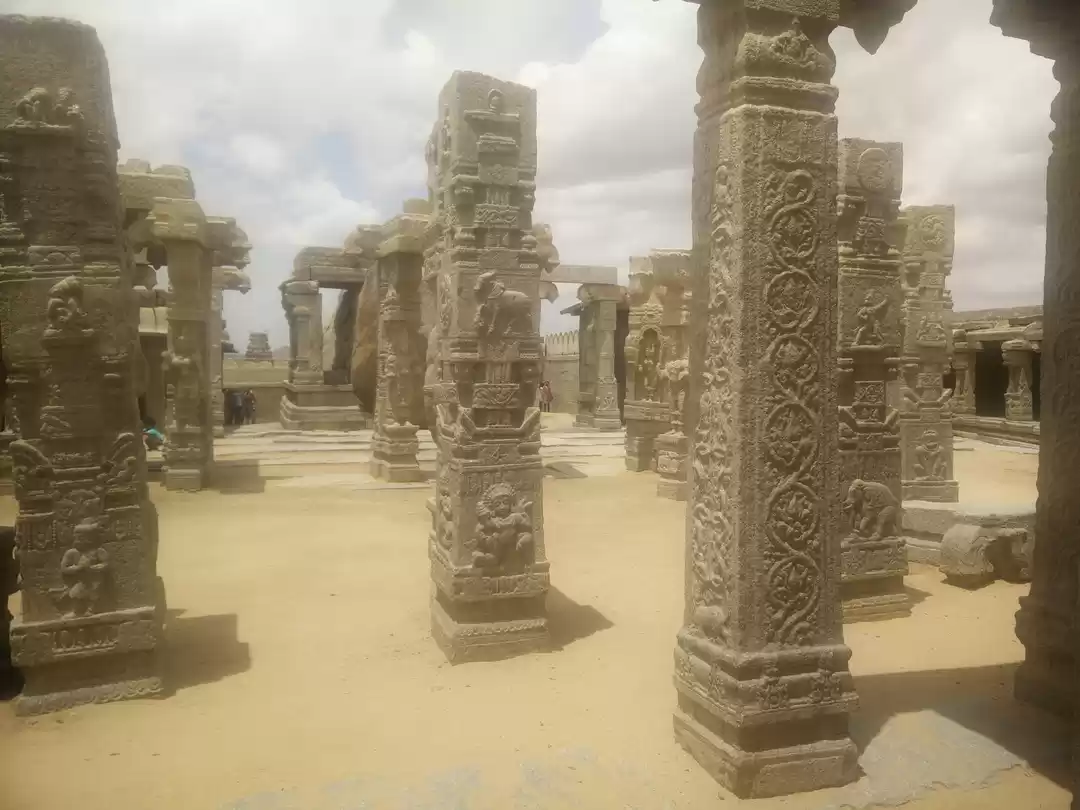Are you fascinated by the ancient history and culture of India? Do you want to explore the roots of Buddhism and its spread across the world? Do you want to see the national emblem of India in its original glory? If you answered yes to any of these questions, then you should visit the Ashoka Pillar and Sarnath, the ancient Buddhist site in Uttar Pradesh.
The Ashoka Pillar and Sarnath are important historical and cultural landmarks for Buddhism and India. They are the places where Buddha gave his first sermon after attaining enlightenment, and where Emperor Ashoka erected his famous pillars and stupas to spread his message of peace and dharma. They are also the places where you can see the magnificent monuments and artifacts of the ancient Indian civilization, as well as the diverse and colorful temples of the modern Buddhist countries.
In this article, we will guide you through the history and significance of the Ashoka Pillar and Sarnath, what to see and do at the site, and how to visit and enjoy the place. We will also share some interesting facts and tips that will make your trip more memorable and enriching.
History of Sarnath and the Ashoka Pillar
The history of Sarnath and the Ashoka Pillar dates back to the 6th century BCE, when a young prince named Siddhartha Gautama renounced his worldly life and embarked on a quest for enlightenment. After wandering for six years, he finally attained nirvana under a bodhi tree in Bodhgaya. He then decided to share his wisdom with his five former companions, who were meditating in a deer park near Varanasi. This place came to be known as Sarnath, which means “the lord of the deer”.
Sarnath is the place where Buddha delivered his first sermon, known as the Dhammacakkappavattana Sutta, or the “Setting in Motion of the Wheel of Dharma”. In this sermon, he explained the four noble truths and the eightfold path, the core teachings of Buddhism. He also founded the sangha, or the community of monks and nuns, who followed his teachings and spread them to others. Sarnath became one of the four holy places of Buddhism, along with Bodhgaya, Kushinagar, and Lumbini.
Sarnath also attracted the attention of Emperor Ashoka, who ruled most of India and beyond in the 3rd century BCE. Ashoka was a ruthless conqueror, who waged many wars and killed millions of people. However, after witnessing the horrors of the Kalinga war, he felt remorse and converted to Buddhism. He then became a benevolent ruler, who promoted peace, justice, and dharma throughout his empire. He also sent his emissaries to various countries, such as Sri Lanka, China, and Greece, to propagate Buddhism.
Ashoka was a great patron of Buddhism and built many stupas and pillars to commemorate the life and teachings of Buddha. A stupa is a dome-shaped structure that contains the relics of Buddha or his disciples. A pillar is a tall and slender column that bears the inscriptions of Ashoka’s edicts and symbols. One of the most famous pillars that Ashoka erected was at Sarnath, which is known as the Ashoka Pillar.
The Ashoka Pillar at Sarnath is made of sandstone and stands at a height of about 15 meters. It has a cylindrical shaft, a bell-shaped base, and a capital that consists of four lions, a wheel, and a bull, a horse, a lion, and an elephant. The four lions face the four cardinal directions and symbolize the power and majesty of Ashoka’s rule. The wheel represents the dharma, or the law of nature, that Ashoka followed and propagated. The bull, the horse, the lion, and the elephant represent the four noble truths that Buddha taught. The Ashoka Pillar is also the source of the national emblem of India, which features the four lions and the wheel.
The Ashoka Pillar and Sarnath witnessed the rise and fall of many dynasties and kingdoms, such as the Kushanas, the Guptas, and the Pala. They also saw the flourishing of art, architecture, and literature, as many monks, scholars, and pilgrims visited the site and contributed to its glory. However, they also faced the destruction and decay, as Muslim invaders, such as Mahmud of Ghazni and Qutub-ud-din Aibak, plundered and razed the site in the 12th and 13th centuries. The site was then forgotten and buried under the debris for centuries, until British archaeologists, such as Alexander Cunningham and John Marshall, rediscovered and excavated it in the 19th and 20th centuries.
The history of Sarnath and the Ashoka Pillar is a history of Buddhism and India, a history of enlightenment and empire, a history of creation and destruction, and a history of resilience and revival. It is a history that you can witness and experience for yourself, when you visit the site and see the monuments and artifacts that tell the story of the past.
What to See and Do at Sarnath and the Ashoka Pillar
Sarnath and the Ashoka Pillar are not just historical sites, but also cultural and spiritual destinations. There are many attractions and monuments that you can see and enjoy at the site, such as:

The Dhamek Stupa:
This is the most prominent and impressive structure at Sarnath. It is a massive stupa that marks the spot where Buddha gave his first sermon. It has a diameter of 28 meters and a height of 43 meters. It is made of bricks and stones, and has intricate carvings of floral and geometric patterns. It is surrounded by a circular railing and a stone platform, where you can walk around and admire the stupa from different angles. You can also feel the peace and serenity that emanates from the stupa, as you listen to the chants and prayers of the monks and devotees.
The Mulagandha Kuti Vihar:
This is a modern temple that was built by the Mahabodhi Society of India in 1931. It is located near the ruins of the original Mulagandha Kuti, or the “fragrant dwelling”, where Buddha used to stay during his visits to Sarnath. The temple has a beautiful architecture that blends the Indian and Sri Lankan styles. It has a golden spire, a red dome, and a white facade. It also has exquisite paintings by a Japanese artist, Kosetsu Nosu, that depict the life and teachings of Buddha. The temple also houses a sacred relic of Buddha, which is displayed in a glass casket on special occasions.
The Archaeological Museum:
This is a must-visit place for anyone who is interested in the history and culture of Sarnath and the Ashoka Pillar. The museum was established in 1904 and has a rich collection of sculptures, inscriptions, coins, and other artifacts that date back to the 3rd century BCE to the 12th century CE. The museum has five galleries, each dedicated to a different period and theme. The most famous and valuable exhibit in the museum is the original capital of the Ashoka Pillar, which features the four lions and the wheel. You can also see other masterpieces, such as the Buddha image in the Dharmachakra Pravartana Mudra, or the “turning the wheel of dharma” gesture, the Bodhisattva image in the Abhaya Mudra, or the “fearlessness” gesture, and the Dharma Chakra, or the “wheel of law”.
The Buddhist Temples:
Sarnath is not only a place of ancient history, but also a place of contemporary culture. You can see the diversity and vibrancy of Buddhism in the various temples that have been built by different countries, such as Thailand, Japan, China, Tibet, Myanmar, and Sri Lanka. Each temple has its own unique style and charm, reflecting the traditions and customs of the respective countries. You can visit the temples and admire their architecture, art, and gardens. You can also participate in their rituals, ceremonies, and festivals, and experience the warmth and hospitality of the Buddhist community.
These are some of the main attractions and monuments that you can see and do at Sarnath and the Ashoka Pillar. However, there are many more things that you can discover and enjoy at the site, such as:
Meditating under the bodhi tree, which is a descendant of the original tree under which Buddha attained enlightenment.
Shopping for souvenirs, such as Buddha statues, prayer beads, Tibetan flags, and books, at the local market near the site.
Exploring the nearby places, such as the Chaukhandi Stupa, which marks the spot where Buddha met his first disciples, the Ashoka Lion Capital, which is a replica of the original capital of the Ashoka Pillar, and the Deer Park, which is a wildlife sanctuary that preserves the natural habitat of the site.
How to Visit Sarnath and the Ashoka Pillar
Sarnath and the Ashoka Pillar are easy to visit and enjoy, as they are well-connected and well-maintained. Here are some practical tips and advice on how to visit the site:
The best time to visit Sarnath and the Ashoka Pillar is between October and March, when the weather is pleasant and cool. You can avoid the heat and humidity of the summer and the monsoon seasons, and enjoy the clear and sunny days. You can also witness some of the important festivals and events that take place at the site, as the site, such as:
- The Buddha Purnima, or the full moon day of May, which celebrates the birth, enlightenment, and death of Buddha.
- The Dhammachakra Pravartana Day, or the first Sunday of October, which commemorates the first sermon of Buddha at Sarnath.
- The Ashoka Vijaya Dashami, or the 10th day of the Hindu month of Ashwin, which marks the victory and conversion of Ashoka to Buddhism.
The how to reach Sarnath and the Ashoka Pillar is very convenient and affordable, as they are located about 10 kilometers from Varanasi, the holy city of India. You can take a train, a bus, a taxi, or a rickshaw from Varanasi to Sarnath, and reach the site in about 30 minutes. You can also hire a car or a bike and drive to the site on your own, and enjoy the scenic views of the countryside.
The entrance fee for the site is Rs. 30 for Indian nationals and Rs. 500 for foreign nationals. The fee includes the access to the Dhamek Stupa, the Ashoka Pillar, the Archaeological Museum, and the Deer Park. The fee does not include the access to the Mulagandha Kuti Vihar and the Buddhist Temples, which are free of charge. You can buy the tickets at the ticket counter near the entrance of the site, or book them online in advance.
The opening hours for the site are from sunrise to sunset, except for the Archaeological Museum, which is open from 9 am to 5 pm, and closed on Fridays. You can visit the site at any time of the day, but the best time is in the morning or in the evening, when the crowd is less and the atmosphere is more serene and tranquil.
The dress code for the site is modest and respectful, as it is a sacred and religious place. You should avoid wearing shorts, skirts, sleeveless tops, or revealing clothes, and cover your shoulders, knees, and head. You should also remove your shoes before entering any of the temples or the museum. You can carry a shawl, a hat, or an umbrella to protect yourself from the sun or the rain.
The guides for the site are optional but recommended, as they can provide you with more information, insights, and stories about the place and its attractions. You can hire a licensed guide from the tourist office near the entrance of the site, or book one online in advance. The guides charge Rs. 300 to Rs. 500 for a two-hour tour of the site. You can also use an audio guide or a guidebook that are available at the museum or the market.
These are some of the practical tips and advice on how to visit Sarnath and the Ashoka Pillar. However, you can also customize your trip according to your preferences and budget, and make your own itinerary and route.
Sarnath and the Ashoka Pillar are among the most fascinating and significant places in India, where you can experience the history and culture of Buddhism and India. You can see the ancient monuments and artifacts that showcase the artistic and architectural achievements of the past, as well as the modern temples and festivals that celebrate the diversity and vibrancy of the present. You can also feel the peace and spirituality that emanate from the place, as you meditate and pray with the monks and devotees.
If you are looking for a unique and enriching travel destination, then you should visit Sarnath and the Ashoka Pillar, and discover the ancient and modern wonders of the site. You will not only learn more about the place and its attractions, but also about yourself and your connection with the world.
We hope that this article has given you a comprehensive and informative guide to Sarnath and the Ashoka Pillar, and has inspired you to plan and enjoy your trip. If you have any questions, feedback, or suggestions, please feel free to share them with us in the comments section below. We would love to hear from you and help you with your travel needs.
Thank you for reading and happy travels!


